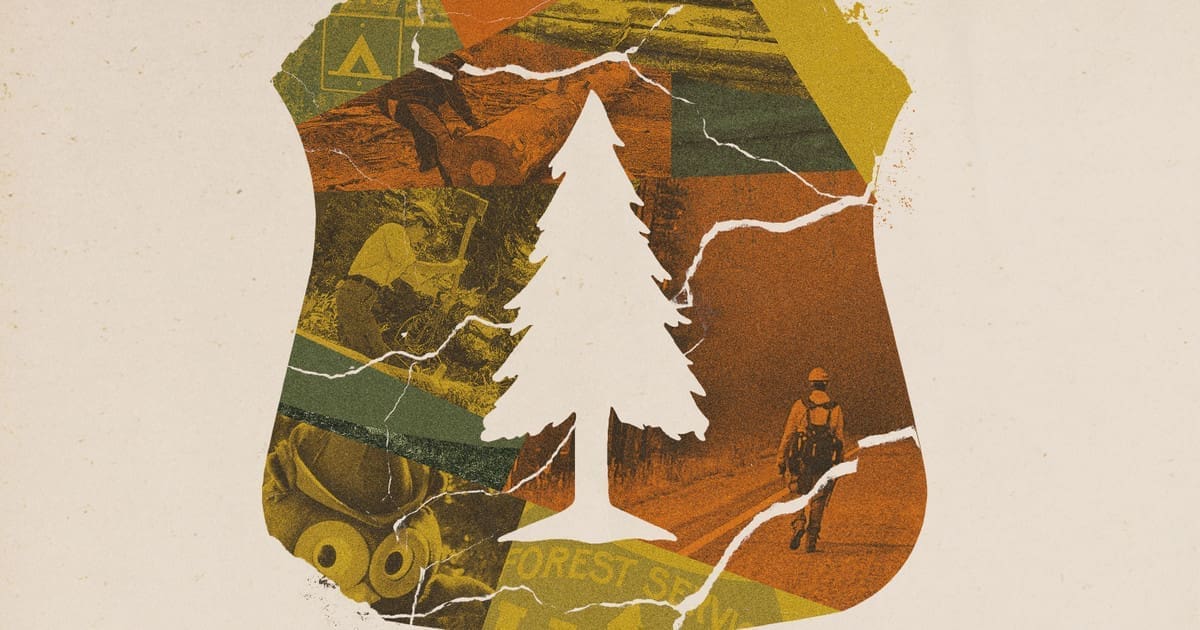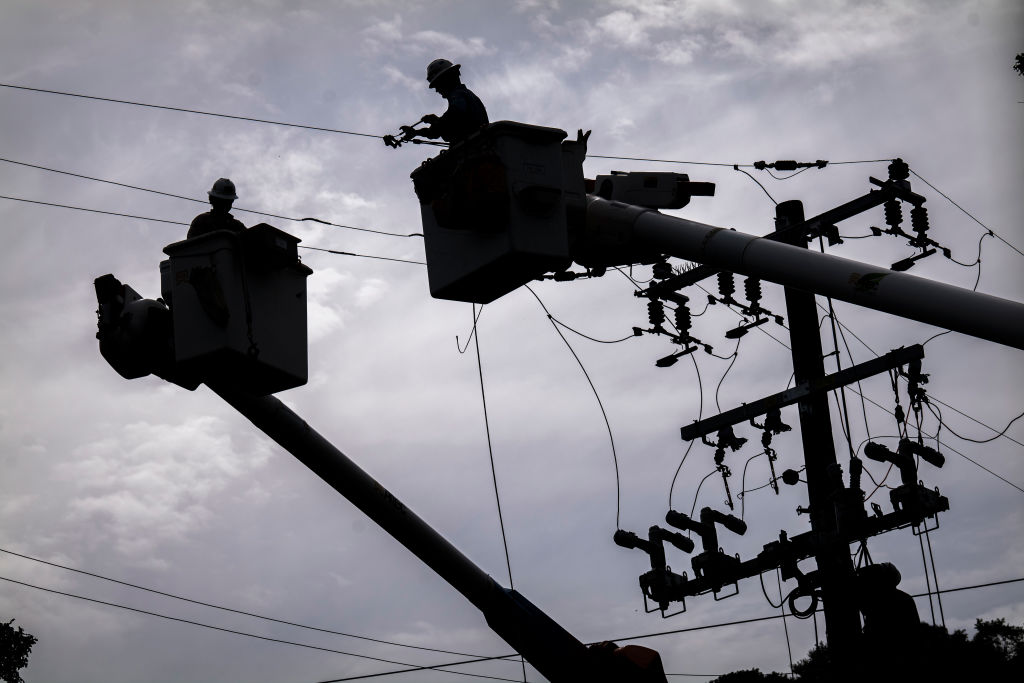ProPublica is a nonprofit newsroom that investigates abuses of power. Sign up for Dispatches, a newsletter that spotlights wrongdoing around the country, to receive our stories in your inbox every week.

State lawmakers are weighing bills that would treat abortion as homicide
April 7, 2025
Between tariffs and survival, American business owners are doing alarming math
April 7, 2025President Donald Trump’s executive orders shrinking the federal workforce make a notable exception for public safety staff, including those who fight wildland fires. But ongoing cuts, funding freezes and hiring pauses have weakened the nation’s already strained firefighting force by hitting support staff who play crucial roles in preventing and battling blazes.
Most notably, about 700 Forest Service employees terminated in mid-February’s “Valentine’s Day massacre” are red-card-carrying staffers, an agency spokesperson confirmed to ProPublica. These workers hold other full-time jobs in the agency, but they’ve been trained to aid firefighting crews, such as by providing logistical support during blazes. They also assist with prescribed burns, which reduce flammable vegetation and prevent bigger fires, but the burns can only move forward if there’s a certain number of staff available to contain them. (Non-firefighting employees without a red card cannot perform such tasks.)
Red-card-carrying employees are the “backbone” of the firefighting force, and their loss will have “a significant impact,” said Frank Beum, a board member of the National Association of Forest Service Retirees who spent more than four decades with the agency and ran the Rocky Mountain Region. “There are not enough primary firefighters to do the full job that needs to be done when we have a high fire season.”
ProPublica spoke to employees across the Forest Service — which manages an area of land nearly twice the size of California — including staff working in firefighting, facilities, timber sales and other roles, to learn how sweeping personnel changes are affecting the agency’s ability to function. The employees said cuts, which have hit the agency’s recreation, wildlife, IT and other divisions, show the Trump administration is shifting the agency’s focus away from environmental stewardship and toward industry and firefighting.
But notwithstanding Trump’s stated guardrails, the cuts have affected the Forest Service’s more than 10,000-person-strong firefighting force. Hiring has slowed as there are fewer employees to get new workers up to speed and people are confused about which job titles can be hired. Other cuts have led to the cancellation of some training programs and prescribed burns.
“It’s all really muddled in chaos, which is sort of the point,” one Forest Service employee told ProPublica.
“This agency is no longer serving its mission,” another added.
The employees asked not to be named for fear of retribution.
The Forest Service did not respond to questions about the impact of cuts other than to clarify the number of terminated employees. The Forest Service spokesperson said about 2,000 probationary employees — typically new staff and those who were recently promoted, groups that have fewer workplace protections — were fired in February. Others with knowledge of the terminations, including a representative of a federal union and a Senate staffer, said the original number of terminated employees was 3,400 but that decreased, likely as workers were brought back in divisions such as timber sales.
The White House and a representative from the Department of Government Efficiency did not respond to requests for comment.
In early March, an independent federal board that reviews employees’ complaints compelled the Department of Agriculture, the Forest Service’s parent department, to reinstate more than 5,700 terminated probationary employees for 45 days. During their first weeks back on the payroll, many, including Forest Service personnel, were put on paid administrative leave and given no work.
The administration and DOGE continue working toward layoffs amid court challenges to their moves. Word circulated throughout the Forest Service in March that departmental leadership had compiled lists containing the names of thousands of additional Forest Service employees who could be soon laid off, according to some workers.
Additionally, understaffing in the agency’s information technology unit is threatening firefighting operations, according to an agency employee. In December, the branch chief overseeing IT for the agency’s fire and aviation division left the job. The Department of Agriculture posted the job opening, describing the division as providing “support to the interagency wildland fire community’s technical needs.” This includes overseeing software that firefighting crews use to request equipment — everything from fire-resistant clothing to hoses — from the agency’s warehouses so first responders have uninterrupted access to lifesaving equipment.
The day after Trump’s inauguration, the Department of Agriculture removed the IT job posting. The position remains unfilled, according to an employee with knowledge of the situation.
The hiring of new firefighters has also bogged down amid the deluge of sometimes-conflicting orders from the administration and DOGE, Forest Service staffers said.
“We are really, really behind onboarding our employees right now,” a Forest Service firefighter told ProPublica.
The staffing issues exacerbate challenges that predate the second Trump administration. To address a massive budget shortfall, the Forest Service under President Joe Biden last year paused the hiring of seasonal workers, except those working on wildfires. (Firefighters did see a permanent pay increase codified by Congress in its recently approved spending bill.)
Still, many permanent employees, including many firefighters, work on a seasonal basis and are placed on an unpaid status for several months each year when there is less work. Uncertainty within the federal government has led many of these employees to give up on government work and look elsewhere.
“Some of our people have taken other jobs,” one Forest Service employee told ProPublica. “People aren’t going to wait around.”
Cuts to the agency’s legal department will also curb its ability to care for the nation’s forests and fight wildfires, an employee told ProPublica. Large prescribed burns and other vegetation-removal projects require environmental review, a process that is often targeted with lawsuits, including by green groups concerned that the efforts go too far in removing trees.
A smaller legal staff could lead to fewer prescribed burns, increasing the risk of catastrophic fires, according to a lawyer for the Department of Agriculture who worked on Forest Service projects. The lawyer was fired in the mid-February purge of probationary employees.
“Every time we lose a case out West, it means the Forest Service can’t do a project, at least temporarily,” the lawyer said.
“They’re going to get sued more, and they’re going to lose more,” said the lawyer, who was reinstated in March following the board ruling that the Department of Agriculture’s mass firings were illegal.
The employee received back pay but was immediately put on administrative leave. Because of the cuts to support staff, it was several weeks before many of the returning employees were reissued government laptops and badges and allowed to do any work.
“Government efficiency at its finest,” the lawyer said.
Great Job by Mark Olalde & the Team @ ProPublica Source link for sharing this story.


















